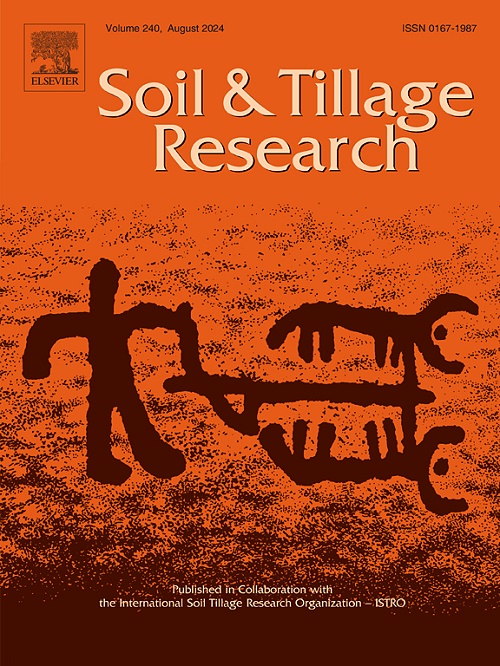Soil carbon allocation, composition, and sequestration changes induced by cropping diversification in tropical systems
IF 6.1
1区 农林科学
Q1 SOIL SCIENCE
引用次数: 0
Abstract
Physical protection by carbon (C) occlusion inside soil aggregates is assumed to be a key mechanism for C stabilization. Nevertheless, little is known about how cropping diversification strategies affect C allocation and protection in soil aggregates and their stability, especially in highly weathered tropical soils. This study evaluated how cover crops and no-tillage affect soil organic matter (SOM) storage and aggregation in a tropical clayey Oxisol in the Brazilian Cerrado region. Changes in soil C and nitrogen (N) stocks, soil aggregate stability, C allocation within aggregates, and C speciation within aggregate classes using spectroscopy analysis were quantified. Soil C and N stocks under the most complex crop systems with cover crops increased by ∼20 % and 29 %, respectively, compared to soybean-maize double cropping. The systems including cover crops increased soil aggregate stability, doubling large macroaggregation in the 5–10 and 10–20 cm depths. Increased aggregation under cover crops enhanced C contents within aggregates, i.e., ∼48 %, 32 %, and 34 % higher for large macroaggregates, macroaggregates, and microaggregates, respectively, compared to soybean-maize double cropping (average considering different layers and cover cropping systems). Spectroscopy analysis showed that the diverse cropping systems increased the aromatic C (i.e., C![]() C/C–C) in large macroaggregates at the 0–5 cm layer while reducing oxidized groups, i.e., C
C/C–C) in large macroaggregates at the 0–5 cm layer while reducing oxidized groups, i.e., C![]() O/O–C
O/O–C![]() O and C–O. Overall, our results revealed that cropping diversification is an effective strategy for increasing soil aggregate stability and physical protection of C (especially aromatic), and therefore can promote soil C storage in tropical soils.
O and C–O. Overall, our results revealed that cropping diversification is an effective strategy for increasing soil aggregate stability and physical protection of C (especially aromatic), and therefore can promote soil C storage in tropical soils.
求助全文
约1分钟内获得全文
求助全文
来源期刊

Soil & Tillage Research
农林科学-土壤科学
CiteScore
13.00
自引率
6.20%
发文量
266
审稿时长
5 months
期刊介绍:
Soil & Tillage Research examines the physical, chemical and biological changes in the soil caused by tillage and field traffic. Manuscripts will be considered on aspects of soil science, physics, technology, mechanization and applied engineering for a sustainable balance among productivity, environmental quality and profitability. The following are examples of suitable topics within the scope of the journal of Soil and Tillage Research:
The agricultural and biosystems engineering associated with tillage (including no-tillage, reduced-tillage and direct drilling), irrigation and drainage, crops and crop rotations, fertilization, rehabilitation of mine spoils and processes used to modify soils. Soil change effects on establishment and yield of crops, growth of plants and roots, structure and erosion of soil, cycling of carbon and nutrients, greenhouse gas emissions, leaching, runoff and other processes that affect environmental quality. Characterization or modeling of tillage and field traffic responses, soil, climate, or topographic effects, soil deformation processes, tillage tools, traction devices, energy requirements, economics, surface and subsurface water quality effects, tillage effects on weed, pest and disease control, and their interactions.
 求助内容:
求助内容: 应助结果提醒方式:
应助结果提醒方式:


